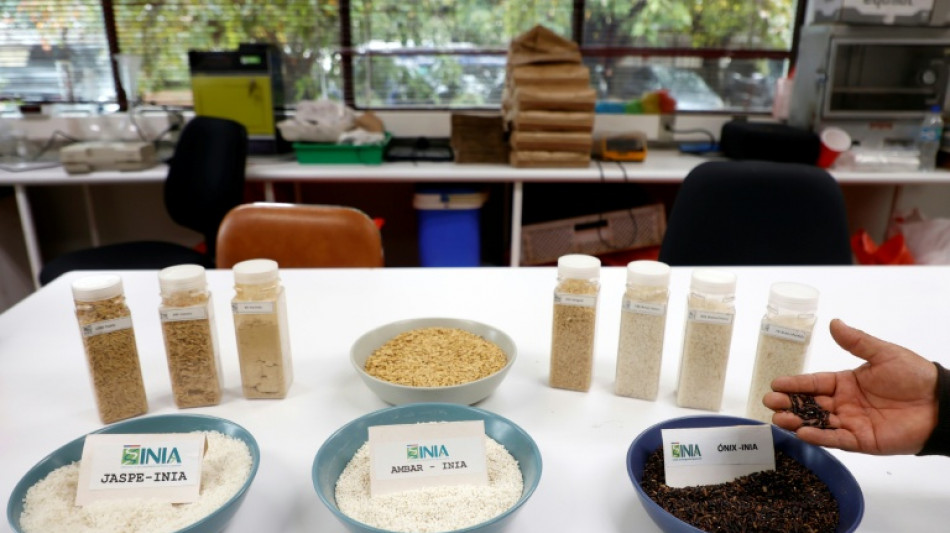
-
 Australian doubles player Purcell accepts 18-month doping ban
Australian doubles player Purcell accepts 18-month doping ban
-
Kashmir attack unites political foes in India, Pakistan
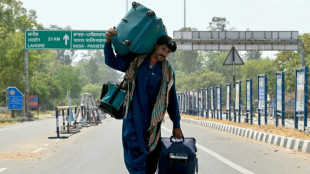
-
 Croatia hotel toasts dizzying century of stars, sovereigns and champagne
Croatia hotel toasts dizzying century of stars, sovereigns and champagne
-
Kenya's desperate need for more snake antivenom
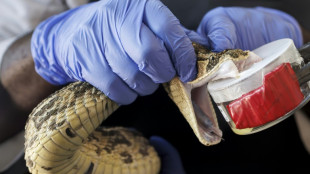
-
 Les Kiss in frame with Wallabies set to name new coach
Les Kiss in frame with Wallabies set to name new coach
-
Cavaliers scorch Heat, Warriors down Rockets in thriller

-
 Opposition wins Trinidad and Tobago election, returning Persad-Bissessar as PM
Opposition wins Trinidad and Tobago election, returning Persad-Bissessar as PM
-
Study sheds light on origin of Australia's odd echidna
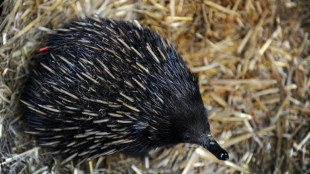
-
 France tries Syrian Islamist rebel ex-spokesman on war crime charges
France tries Syrian Islamist rebel ex-spokesman on war crime charges
-
Trump boasts of 'fun' 100 days, but Americans disenchanted

-
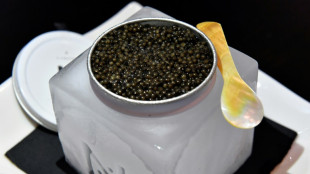 Elitist no more, caviar is turning casual
Elitist no more, caviar is turning casual
-
Amnesty accuses Israel of 'live-streamed genocide' against Gaza Palestinians

-
 Inter slump puts season at risk ahead of daunting Barca trip
Inter slump puts season at risk ahead of daunting Barca trip
-
Power returns to most of Spain, Portugal after massive blackout

-
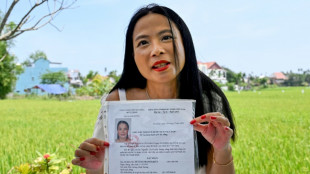 'I have hope': Vietnam Babylift survivor's search for birth mother
'I have hope': Vietnam Babylift survivor's search for birth mother
-
US climate assessment thrown into doubt as Trump dismisses authors

-
 Venezuelan president slams US over little girl's 'abduction'
Venezuelan president slams US over little girl's 'abduction'
-
Hard-right upstarts eye big gains in local UK polls

-
 Skulls, smoke and spirits: Thai ceremony for the unclaimed dead
Skulls, smoke and spirits: Thai ceremony for the unclaimed dead
-
Canada's Carney: political newcomer who says he's best in a crisis

-
 Cavaliers scorch Heat to seal series sweep
Cavaliers scorch Heat to seal series sweep
-
Dead salmon create election stink on Australian island
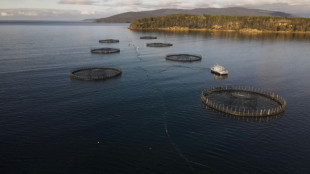
-
 Mic check: Singapore's podcast boom amplifies opposition voices
Mic check: Singapore's podcast boom amplifies opposition voices
-
Markets rise as traders gear up for earnings, key jobs data

-
 Congress passes 'revenge porn' ban, sending it to Trump
Congress passes 'revenge porn' ban, sending it to Trump
-
Spain and Portugal work to restore power after massive blackout

-
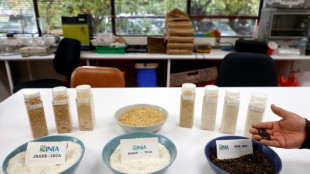 Less-thirsty rice offers hope in drought-stricken Chile
Less-thirsty rice offers hope in drought-stricken Chile
-
Yamal stardust could give Barca edge on Inter Milan

-
 Coca-Cola Europacific Partners plc Announces Q1 Trading Update & Interim Dividend Declaration
Coca-Cola Europacific Partners plc Announces Q1 Trading Update & Interim Dividend Declaration
-
Trump targets US 'sanctuary cities' in migrant crackdown

-
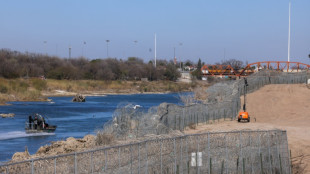 Mexico agrees to send water to US after Trump threatens tariffs
Mexico agrees to send water to US after Trump threatens tariffs
-
Amazon launches first Starlink-rival internet satellites

-
 US lost seven multi-million-dollar drones in Yemen area since March
US lost seven multi-million-dollar drones in Yemen area since March
-
Bucks blow as Lillard suffers torn Achilles: team

-
 Putin orders three-day truce amid new US warnings
Putin orders three-day truce amid new US warnings
-
Real Madrid's Ancelotti agrees Brazil deal - reports

-
 ChatGPT adds shopping help, intensifying Google rivalry
ChatGPT adds shopping help, intensifying Google rivalry
-
Global stocks mixed amid trade hopes as markets await tech earnings

-
 Commanders heading back to D.C. after inking $3.7 bln stadium deal
Commanders heading back to D.C. after inking $3.7 bln stadium deal
-
US warplane falls off aircraft carrier into Red Sea

-
 Feisty Arteta urges Arsenal fans to 'bring boots' to PSG Champions League clash
Feisty Arteta urges Arsenal fans to 'bring boots' to PSG Champions League clash
-
Bucks blow as Lillard suffers ruptured Achilles: reports

-
 No power, no phone, no transport -- Spain in a panic
No power, no phone, no transport -- Spain in a panic
-
US warplane went overboard into Red Sea: Navy

-
 'Like a dream' as IPL's 14-year-old Suryavanshi becomes youngest to hit T20 ton
'Like a dream' as IPL's 14-year-old Suryavanshi becomes youngest to hit T20 ton
-
Luis Enrique says PSG have improved since October Arsenal loss

-
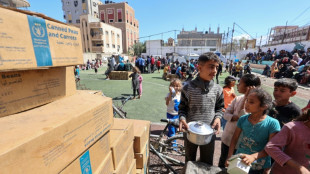 UN food, refugee agencies warn of huge cuts after funding losses
UN food, refugee agencies warn of huge cuts after funding losses
-
Trump trade war dominates BRICS meeting in Brazil

-
 Rashford expected to miss rest of Aston Villa season
Rashford expected to miss rest of Aston Villa season
-
IPL's 14-year-old Suryavanshi youngest to hit T20 ton as Rajasthan rule


Less-thirsty rice offers hope in drought-stricken Chile
A cold, dry part of Chile might not sound like the best place to grow rice, a famously thirsty grain that thrives in tropical conditions.
But a new strain of the world's favorite cereal developed by scientists in the drought-plagued South American country has generated hope that rice can be grown in seemingly inhospitable conditions.
Using an innovative planting technique, Javier Munoz has been trialling the "Jaspe" strain created by experts at the Agricultural Research Institute's (INIA) Rice Breeding Program.
It is one of several research efforts worldwide to come up with less resource-hungry crops at a time of increased water scarcity in parts of the world due to global warming.
Using Jaspe in combination with a growing method that requires only intermittent watering cut the Munoz family's water consumption in half in a country that has for generations cultivated rice in flooded fields, or paddies.
At the same time, yield rocketed, with each seed yielding about thirty plants -- nearly ten times more than a conventional rice field.
Irrigating rather than flooding rice fields "is a historic step... towards the future," Munoz, 25, told AFP at his farm in the region of Nuble, a nearly five-hour drive south from the capital Santiago.
Next year, he said, he hoped to increase his production area from one hectare to five.
Chile's Maule and Nuble regions contain the southernmost rice fields in the world.
Typically grown in wetter, tropical areas, rice cultivation in Chile has been hampered by an unprecedented megadrought, now in its 15th year and driven by climate change, according to scientists.
Each Chilean eats on average 10 kilograms (22 pounds) of rice per year -- nearly half of which is grown domestically and 80 percent of that in flooded fields, according to the SRI-Rice research center at Cornell University.
The flooding method, which requires about 2,500 liters (660 gallons) of water per kilogram (2.2 pounds) of rice, is used around the world to combat weeds and regulate the temperature around vulnerable seedlings.
- Less methane -
The Jaspe rice strain was obtained by INIA agricultural engineer Karla Cordero and colleagues by crossing a Chilean seed with a Russian one better adapted to cold and dry climates.
The modified seed is then grown using the SRI growing technique developed in Madagascar in the 1980s that involves spacing the seedlings further apart in enriched soil, and watering only sporadically to build a more resilient root system.
Cordero presented the results of nearly 20 years of experimentation -- conducted with backing from the Inter-American Institute for Cooperation on Agriculture (IICA) -- at an International Rice Research Conference in Manila in 2023.
The findings have yet to be published in a peer-reviewed scientific journal, but Chile's Agriculture and Livestock Service, an arm of the agriculture ministry, gave the green light in 2023 for the new strain of long-grain white rice to be rolled out commercially.
Apart from using less water and fewer seeds, the new Jaspe-SRI method also emits less methane, a potent planet-warming gas more famously produced by cows.
Rice cultivation in flooded paddies crawling with microorganisms is responsible for about 10 percent of human-caused methane emissions, according to the UN's Food and Agriculture Organization.
- 'Climate-smart' -
Jaspe has proven to be more resistant to storms, floods and heatwaves. "The plants are much more robust, which allows rice to be produced without flooding," Cordero said.
Makiko Taguchi, a rice cultivation expert at the UN Food and Agriculture Organization (FAO), told AFP the Chilean work amounted to "a promising approach to improving rice production while reducing the environmental impact."
Pointing to similar work being done in Japan, she said: "Obtaining resistant varieties is one of the main ways to increase resilience to climate change."
Cordero said the results suggested the approach could also work in other parts of the world "where large quantities of rice are produced and where there are droughts."
The team hopes to test Jaspe soon in Brazil -- the largest rice producer in the region -- and in other South American countries.
"This is the future," said Munoz. "If we want... food security and care about the environment, this is the way."
F.Dubois--AMWN

